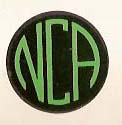
Nucleonic Company of America
The Nucleonic Company of America was located at 497 Union Street in Brooklyn, New York in 1949. Later it was located sy 196 DeGraw Street in 1954. The company was founded by Dr. Benjamin Schloss. Dr Schloss was the chief of an instrument group at the Metallurgical Lab at the University of Chicago which had developed Geiger counters for research on the atomic bomb project.

Nucleonic Company of America Logo 1955
The Model RC1 Radiation Counter was introduced in 1949. It was an AC operated scaler and count rate meter. It weighed 20 lbs and measured 10.5” x 12.5” x 8”. It has scale readings of 500, 5,000 and 50,000 cpm. The high voltage was adjustable from 500 to 1,500 volts.
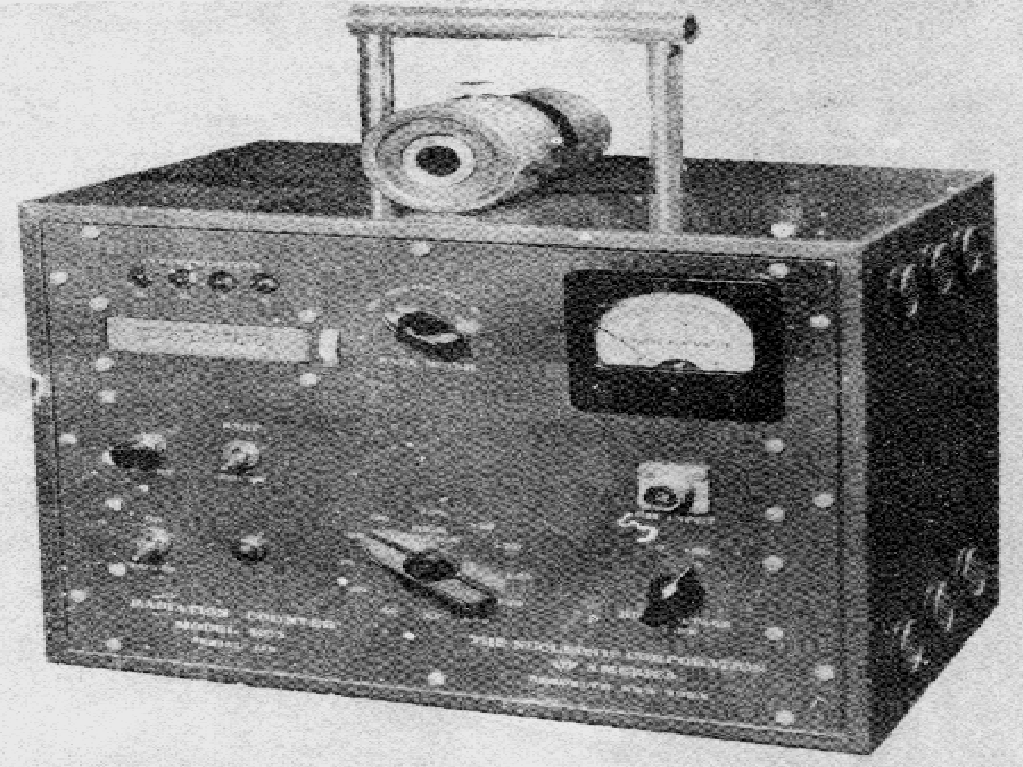
Nucleonic Corporation of America Model RC1 1949
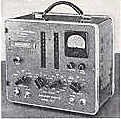
Nucleonic Corporation of America Old Counter 19xx

Nucleonic Corporation of American Ad with Radiation Detectors for Goodyear Rubber Measurements 1950's
The RD-1 is a battery operated portable survey meter introduced in 1949. It has earphones for detecting radiation. The Model RD-1A has both earphones and a flashing light. The units both measure 6”x4”x3” and weighed 2.5 lbs. Radiation indication was by clicks in the earphones audible at 30 feet. The high voltage was variable from 500 to 1500 volts. The gamma tube is mounted inside the case. It used one 90V and two 1.5V batteries. It can be adapted for use with a thin end window geiger probe.

Nucleonic Corporation of America RD-1 1949
The Model RD-1 and RD-1A were introduced in 1949. The units had rugged geiger counter tubes and low priced batteries to provide a low cost unit for uranium prospecting.
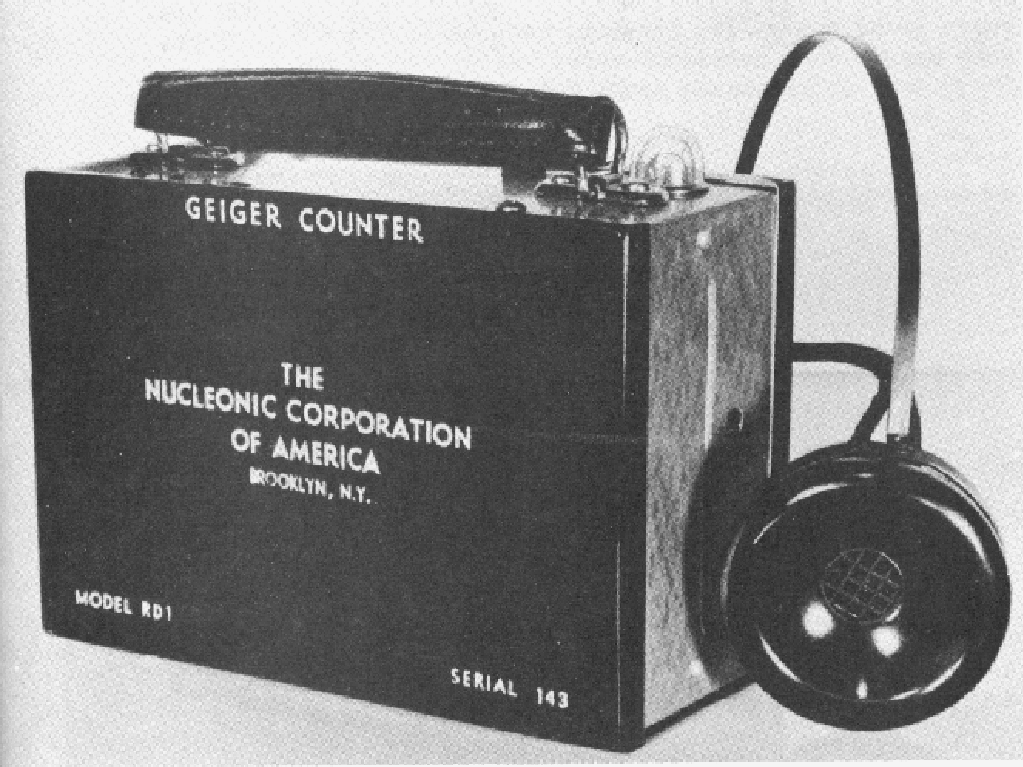
Nucleonic Corporation of America RD-1 1949
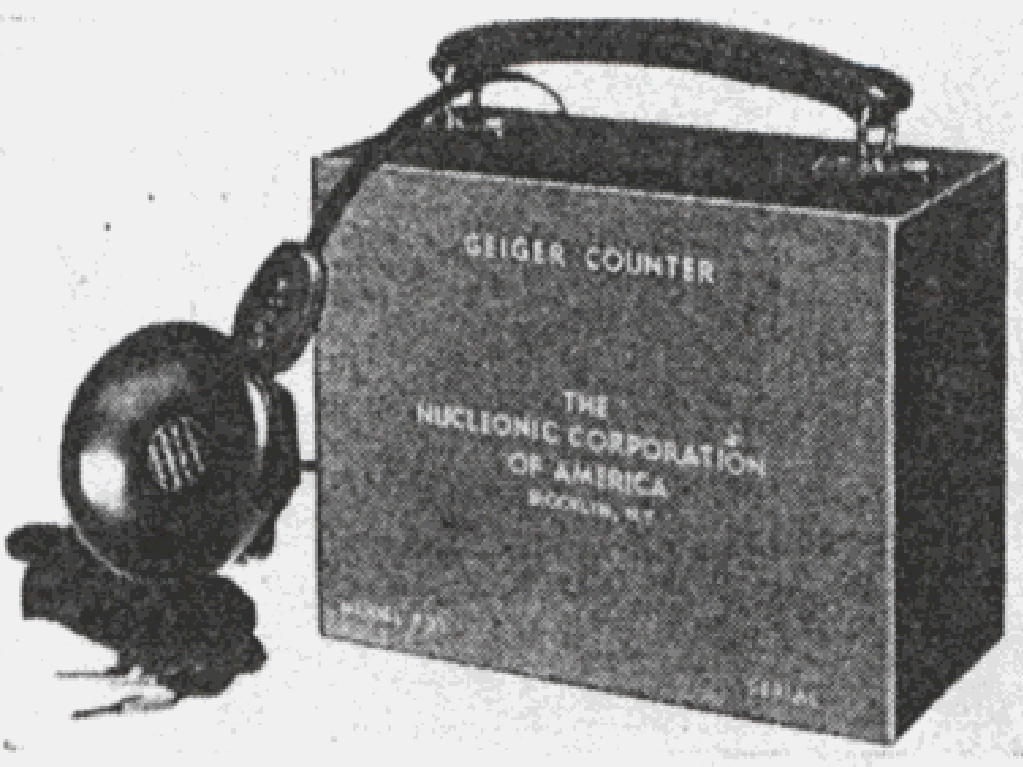
Nucleonic Corporation of America RD-1A 1949
The Model DM-1 was a alpha, beta and gamma monitor introduced in 1950 designed for radiation monitoring, classroom instrument or laboratory research. Alpha radiation can be measured separate from beta gamma. It measured 10”x8”x8” and weighed 11 lbs. It operates on AC. It has a 4.5” meter for easy viewing. Sensitivity ranges were 1500 and 15,000 cpm. The high voltage was variable from 300-1500 volts. It had an end window geiger tube for alpha and soft beta and an all glass tube for gamma and hard beta. It had a loudspeaker and a neon flashing light. It had a scope terminal for viewing GM pulses.

Nucleonic Corporation of America DM-1 1950
The Model RM-1 “Radiation Meter” was introduced in 1949 as a portable survey meter that can measure alpha separately or simultaneous beta gamma radiation. It has three ranges – (optional) 10, 100 and 1,000 cps or 500, 5000, and 50,000 cpm for alpha and beta and 0.2-20 mR/h for gamma. It has a variable high voltage supply from 400-1,450-volts from 67.5-volt batteries. It also uses two 1.5-volt batteries. It could handle a mica end window alpha and medium beta probe or an all glass cylindrical tube for hard beta and gamma. It has a pilot light to indicate instrument is on. The unit measures 7” x 11” x 3.25” and weighs 9.5 lbs. The unit is also splash-proof.
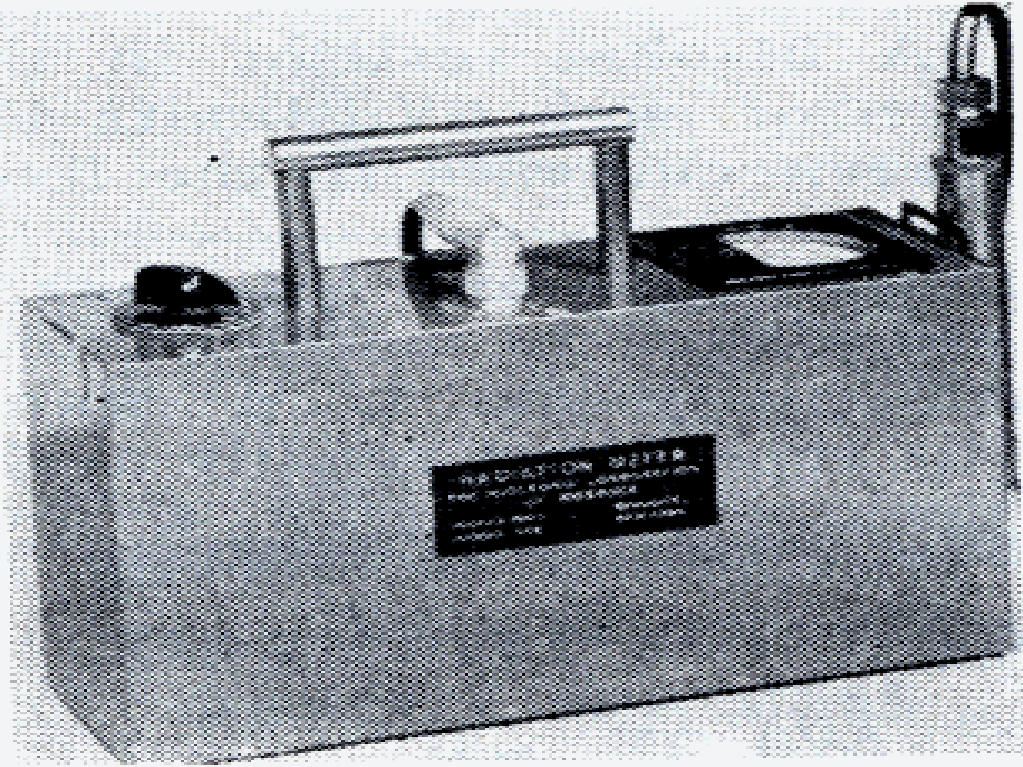
Nuclear Corp of America Model RM-1 1949
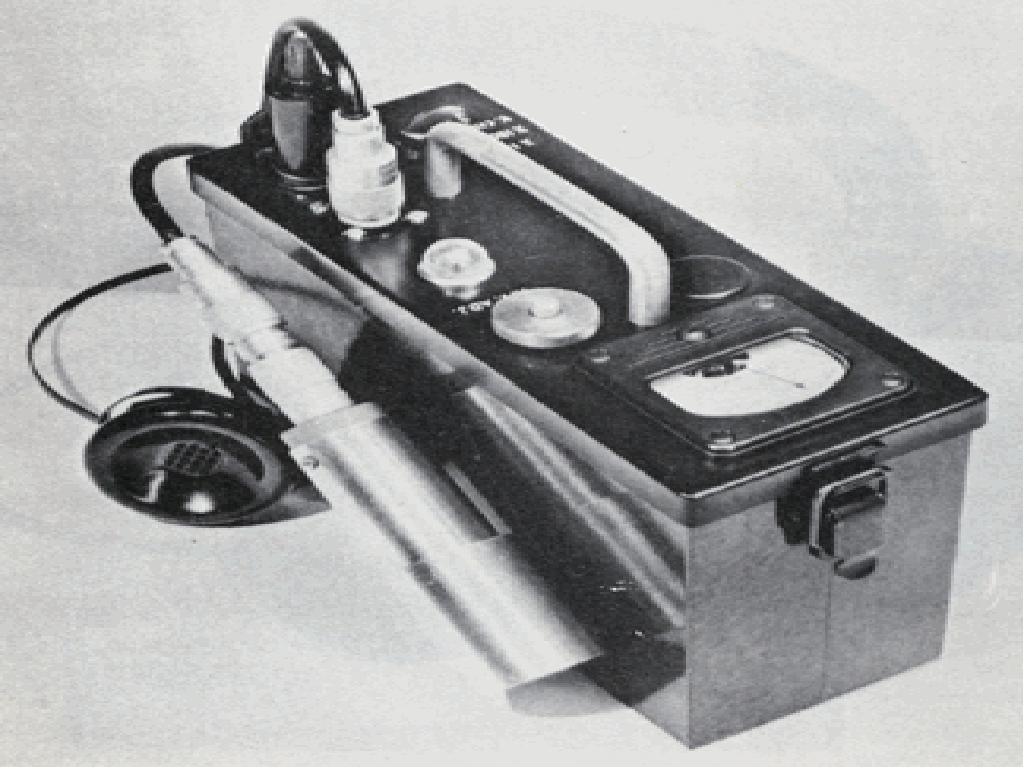
Nucleonic Corporation of America RM-1 1950
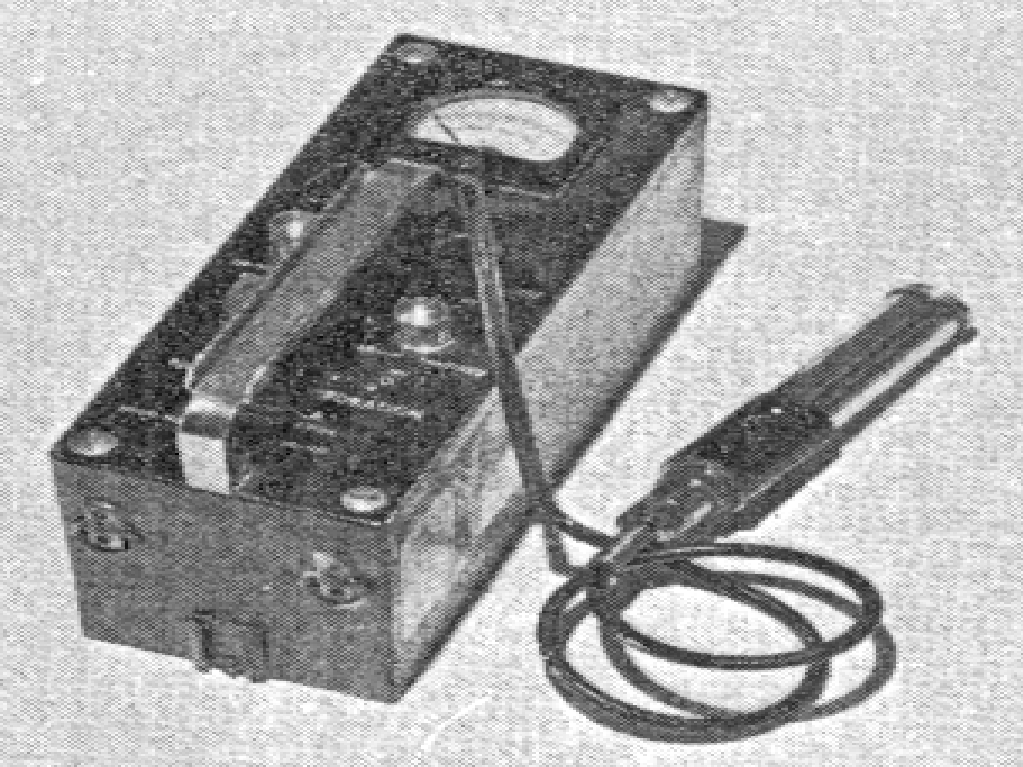
Nucleonics Corporation of America RM-1 1959
The RM-2 was introduced in 1951 was a beta gamma monitor. It had ranges from 0.5, 5, and 50 mR/h. For particle detection it had ranges from 500, 5000 and 50000 cpm. The probe design permit differentiation between beta and gamma. The high voltage was 900V. A modification allow high voltage from 300-1600 and a provision for monitoring alphas.

Nucleonic Corporation of America RM-2 1951
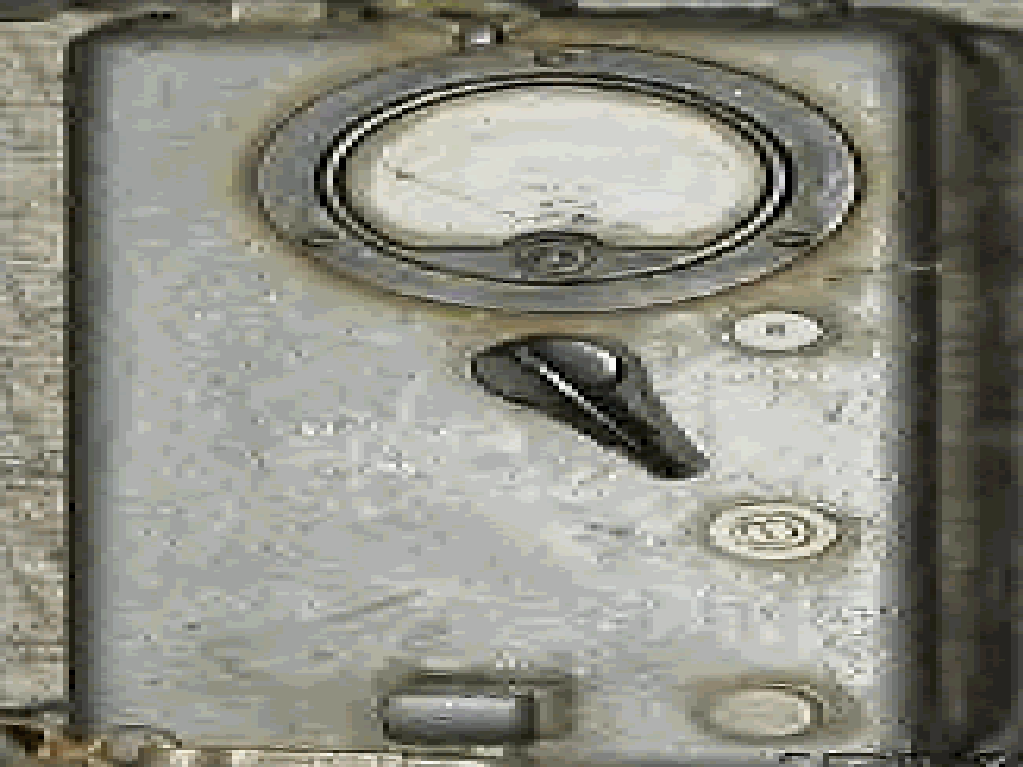
Nucleonic Corporation of America RM-2 1953
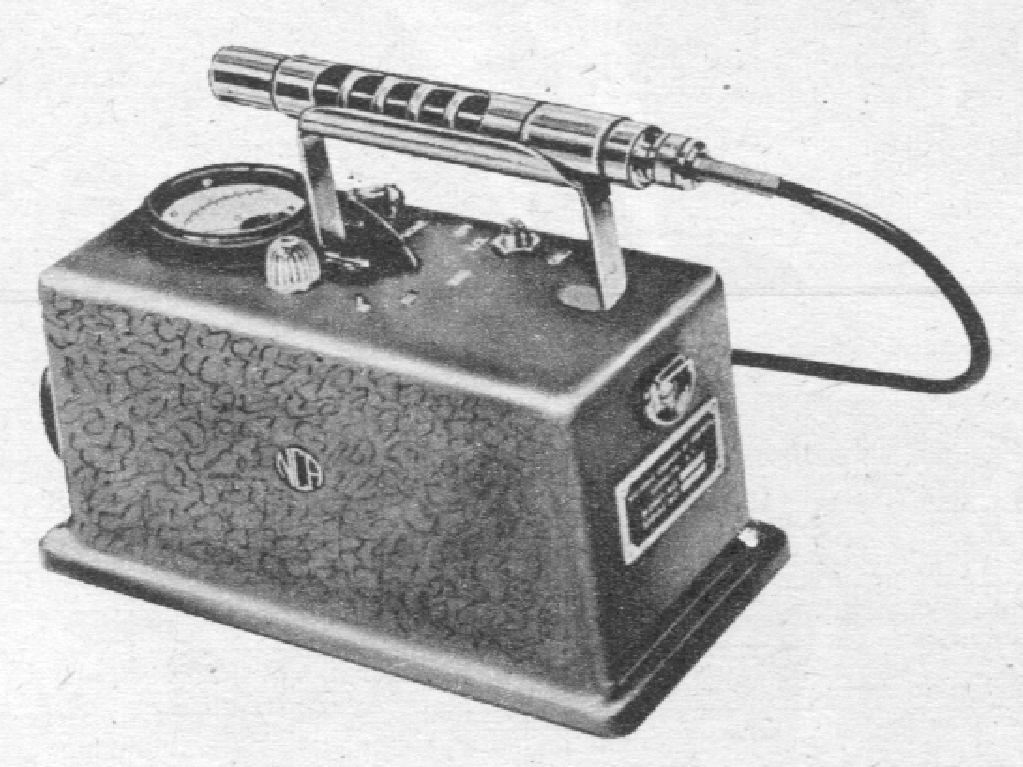
Nucleonic Company Model RM2 1955
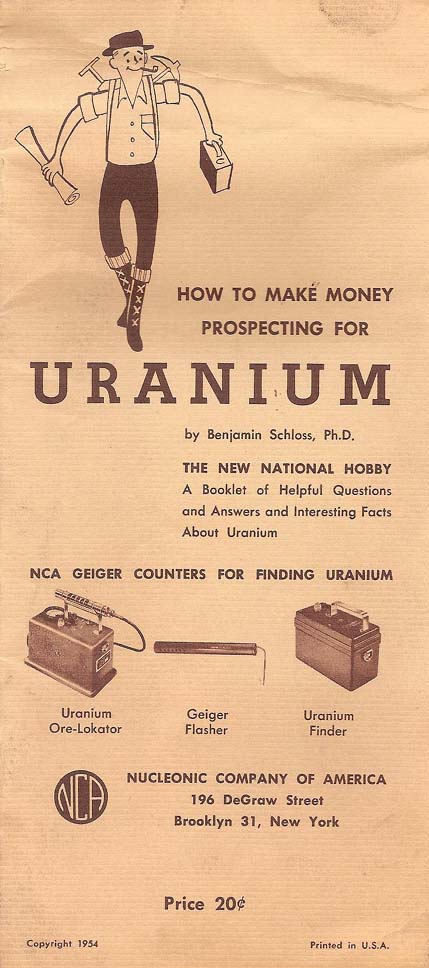
Nucleonic Company of America Booklet 1954
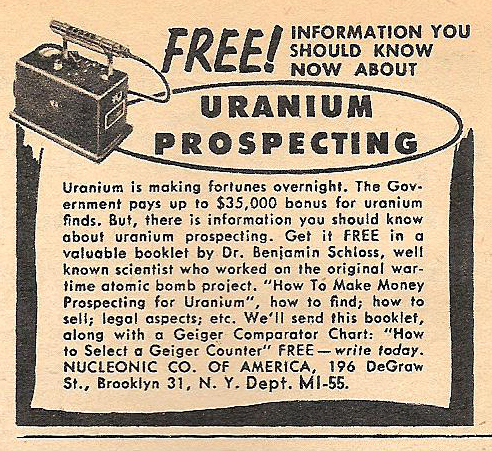
Nucleonic Corporation of America Ad in Mechanix Illustrated 1955
The Orolokator, Jr., Model RD was developed by the Nucleonic Company of America in 1955. It was designed primarily for prospecting and assaying. It was used to detect beta and gamma rays. The indicator was either a flashing light or clicking sound. For assaying, the unit came with six aluminum planchets. Five are filled with ore samples with known uranium concentrations. The sixth planchet can be filled with ore found and compared to the known concentrations. The clicks or flashes per minute accomplish the comparison.

Nucleonic Company Orlokator, Jr Model RD
The Uranium Ore-Lokator Model RM2N was introduced in 1954. It measures beta and gamma down to 0.02 mR/h (equivalent to 0.003% uranium). It has a 2.5” scale face with ranges from 0-500, 0-5000, and 0-50,000 cpm. Dosage is read in 0.25, 2.5 and 25 mR/h. It uses two 67.5V and three 1.5V batteries. It had advanced electronics for stable high voltage. The unit came complete with a magnetic earphone, radioactive calibrating source, sample pans, and instruction manual. The unit was 7-7/8" x 4" x 4-1/2" and weighed 5 lbs. It sold for $142.50. The unit weighs 7 lbs. A plug is Geiger tube was mounted in a chrome casing with a 3.5 foot cable. The case is tropicalized, hammertone blue aluminum. It claimed a sensitivity of 0.02 mR/h or a concentration of 0.003% uranium. was designed for locating uranium ore deposits. A neon light indicated that the unit was operating. The unit sold for $142.50 and came with a "radio-active calibrating source".
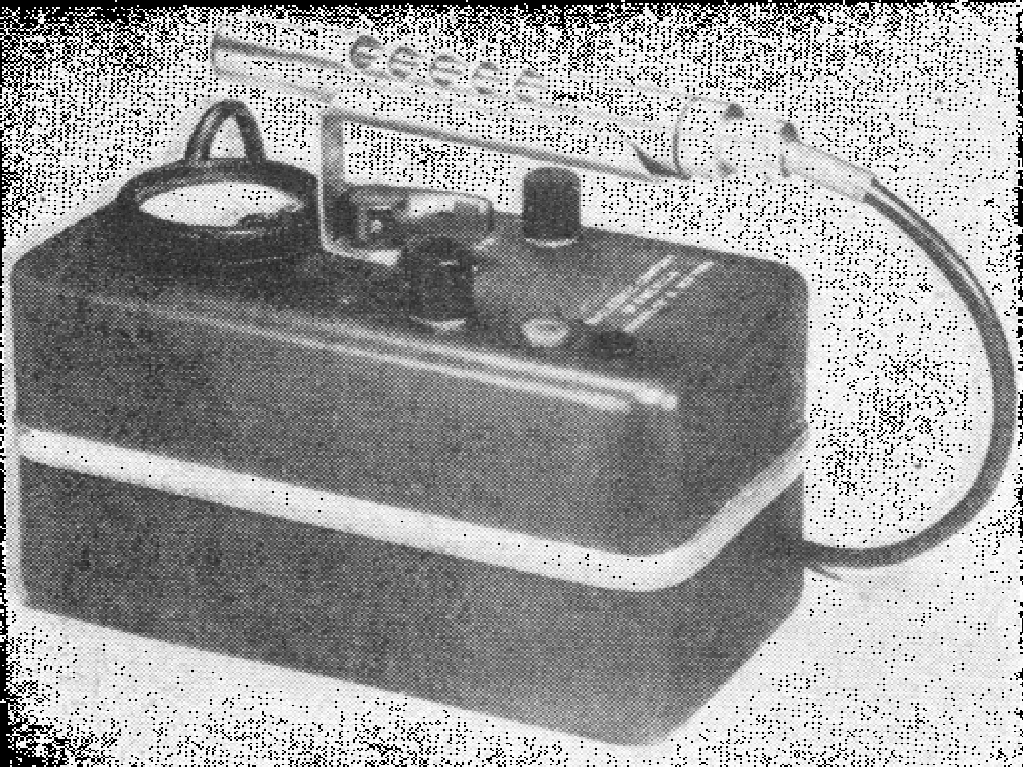
Nucleonic Company Ore-Lokator 1954
The “Uranium Finder” Model RDN was sold in 1955 for $53.50. The unit could detect down to 0.02 mR/h or ore with as little as 0.003% uranium. It was a compact unit 7” x 4-1/2” x 3-1/4” and weighed 3-3/4 lbs. It is mounted in a blue hammertone, watertight case. It is equipped with two indicators, either a neon flashing light or earphones. Battery life is 200 hours. It came with a shoulder strap for easy carrying in the field.
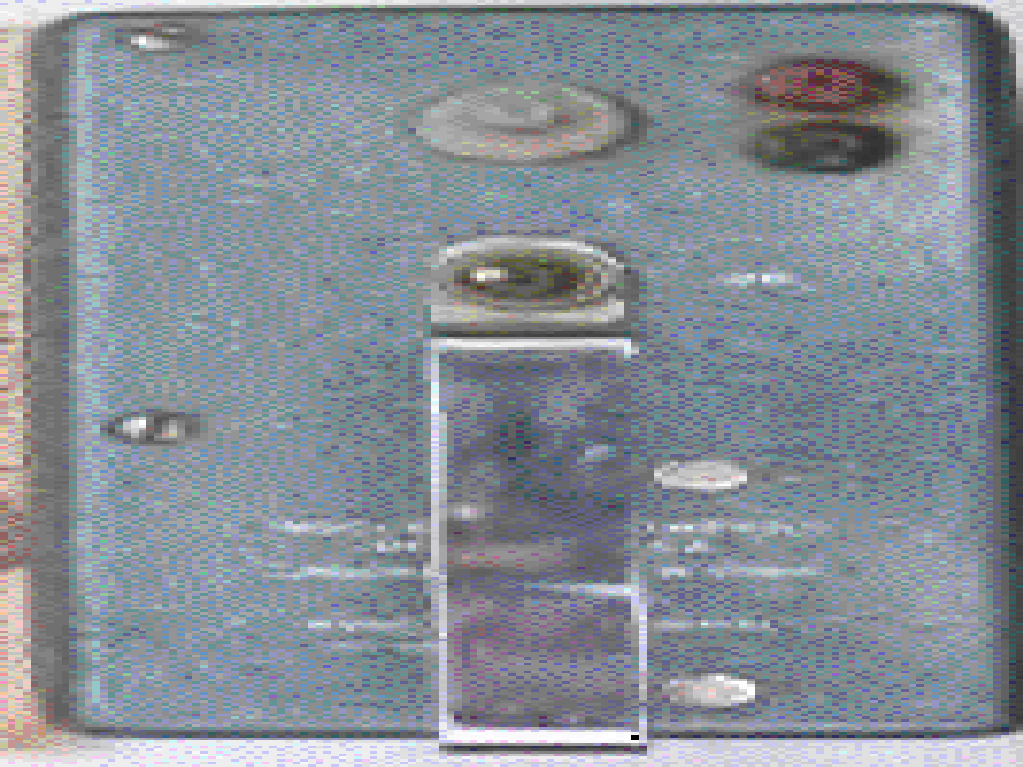
Nucleonic Company Uranium Finder 1955
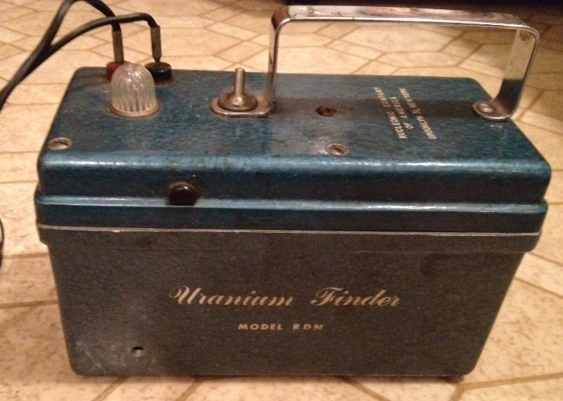
Nucleonic Company Uranium Finder Model RDN 1955
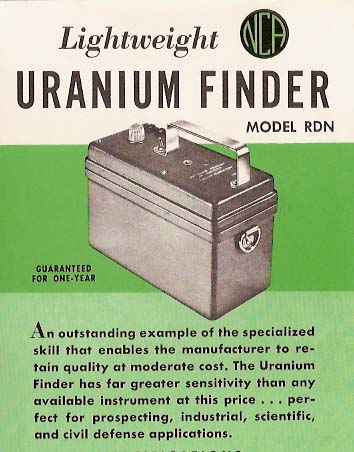
Nucleonic Company Uranium Finder Model RDN 1955
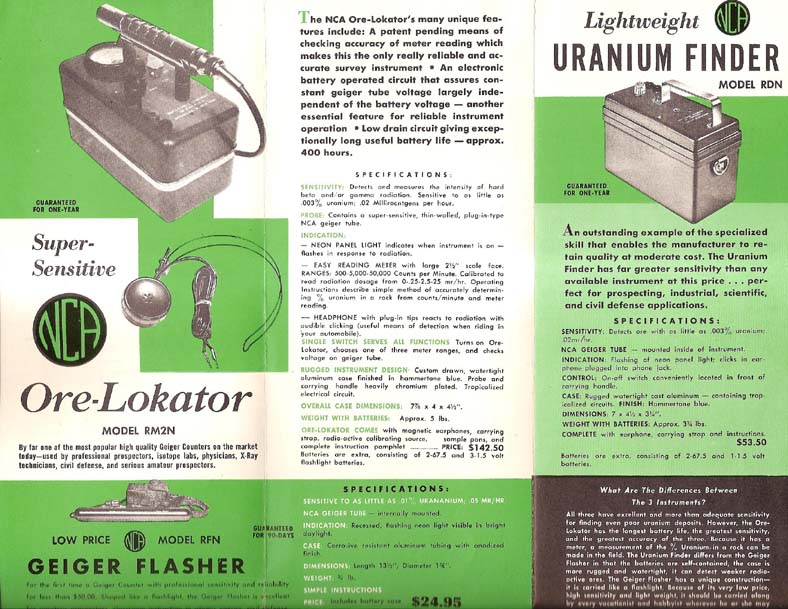
Nucleonic Company Ad 1955
The Model RDN has an internally mounted Geiger tube and no meter. It has a neon flasher or headphones. It was introduced in 1955.
In 1954, the company moved to 196 DeGraw Street, Brooklyn, New York and produced the “Geiger Flasher” model RFN for $24.95 in 1955. This novel instrument has a small Geiger tube mounted in an aluminum anodized finish housing similar to a flashlight. At one is a “peep hole” for a neon flasher. It can be seen in broad daylight. The housing is 13.5” long x 1-5/8” diameter and weighed 3/4 lbs. Batteries to actuate the flasher are carried in a carrying case. It has two 67.5 volt and one 1.5 volt batteries. Sensitivity is 0.05 mR/h. This same instrument is available also from the U.S. Geiger Company.
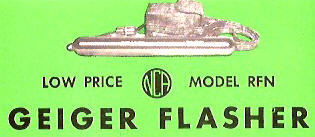
Nucleonic Company Model RFN Geiger Flasher 1954
Nucleonic Company Model RFN A1150 Geiger Flasher
In 1953, NCA offered a new versatile survey meter designated the Model RM2A-B. It could be used with beta gamma and alpha beta gamma end window Geiger tube. It could also be used with scintillation counters, proportional alpha counters, neutron counter, and bismuth counters. It has a 2.5” meter with mR/h and cpm. Ranges were from 0.5-50 mR/h and 500-50000 cpm. It had a high voltage check and variable voltage from 300-1600V.
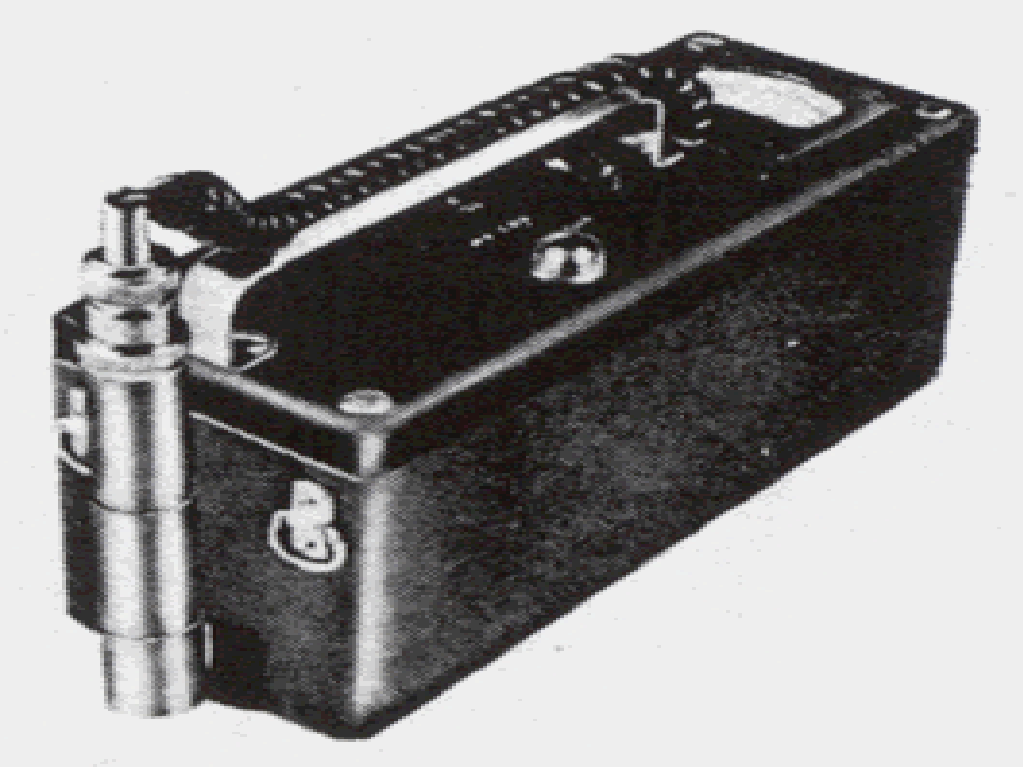
Nucleonic Corporation of America Model RM2A 1953
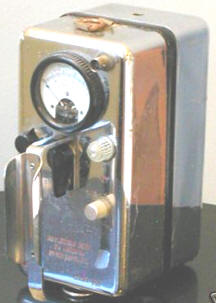
Nucleonic Corporation of America Model RM2B
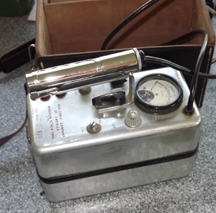
Nucleonic Corporation of America Model RM2B
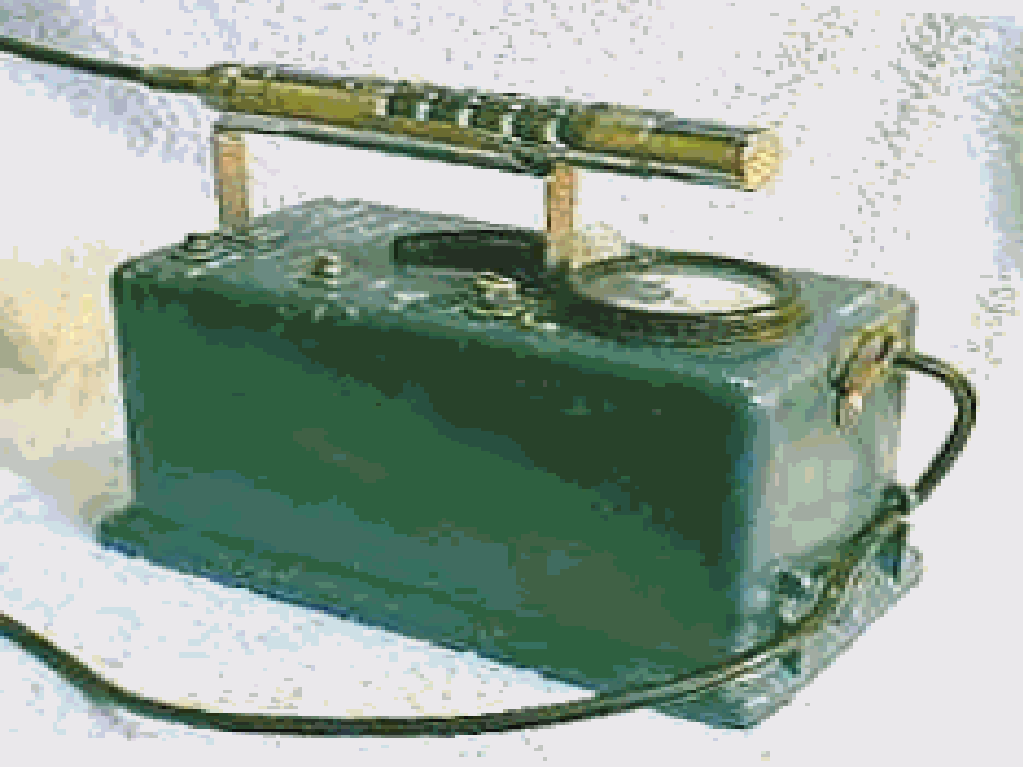
Nucleonic Company Ore-Lokator Model RM2N 1954
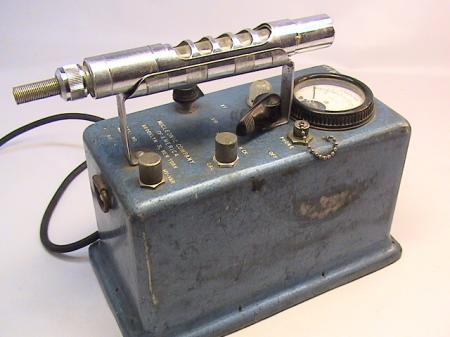
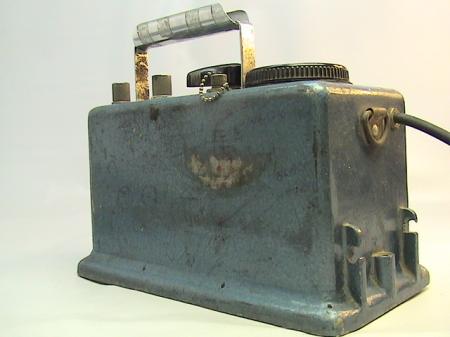

Nucleonic Company Ore-Lokator Model RM2N 1950's
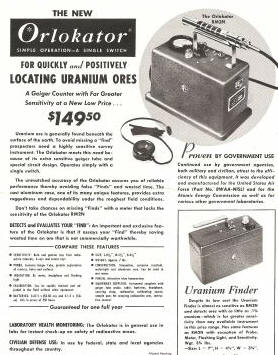
Nucleonic Company Orlokator Model RM2N Ad 1950's

Nucleonic Company Ore-Lokator Model RM2N Ad 1954
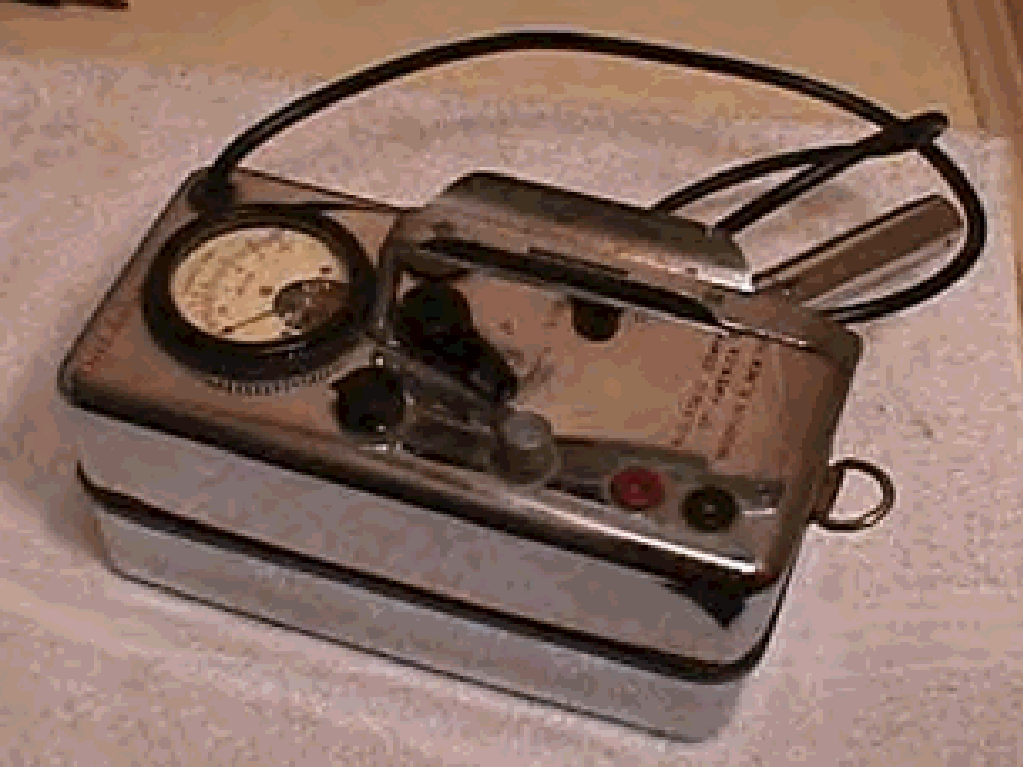
Nucleonic Corporation Ore-Lokator Model RM2N
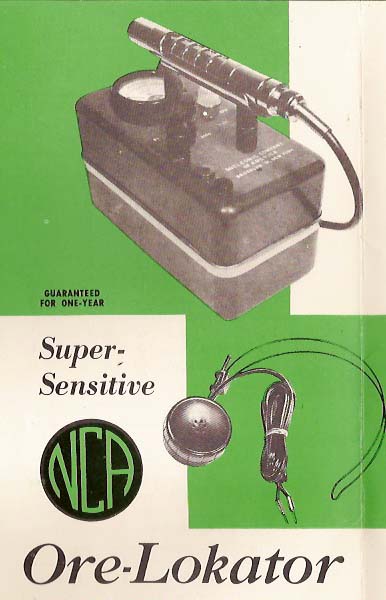
Nucleonic Corporation Model RM2N 1955
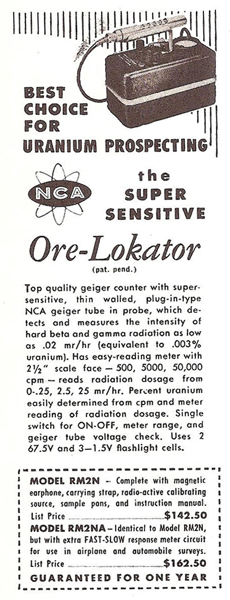
Nucleonic Corporation of America Model RM2N Ad 1955
The Model RM2NA is identical to the Model RM2N but with an extra Fast-Slow response meter circuit for use in airplane or automobile surveys. It could measure as low as 0.02 mR/h equivalent to 0.003% uranium. The 2.5" easy-reading meter had scales of 500, 5000, and 50,000 and dosage of 0.25, 2.5 and 25 mR/h. Percent uranium easily determine from the cpm meter. It uses two 67.5 volt and three 1.5 volt batteries. The Model RM2N sold for $142.50 and the Model RM2NA for $162.50 in 1955.
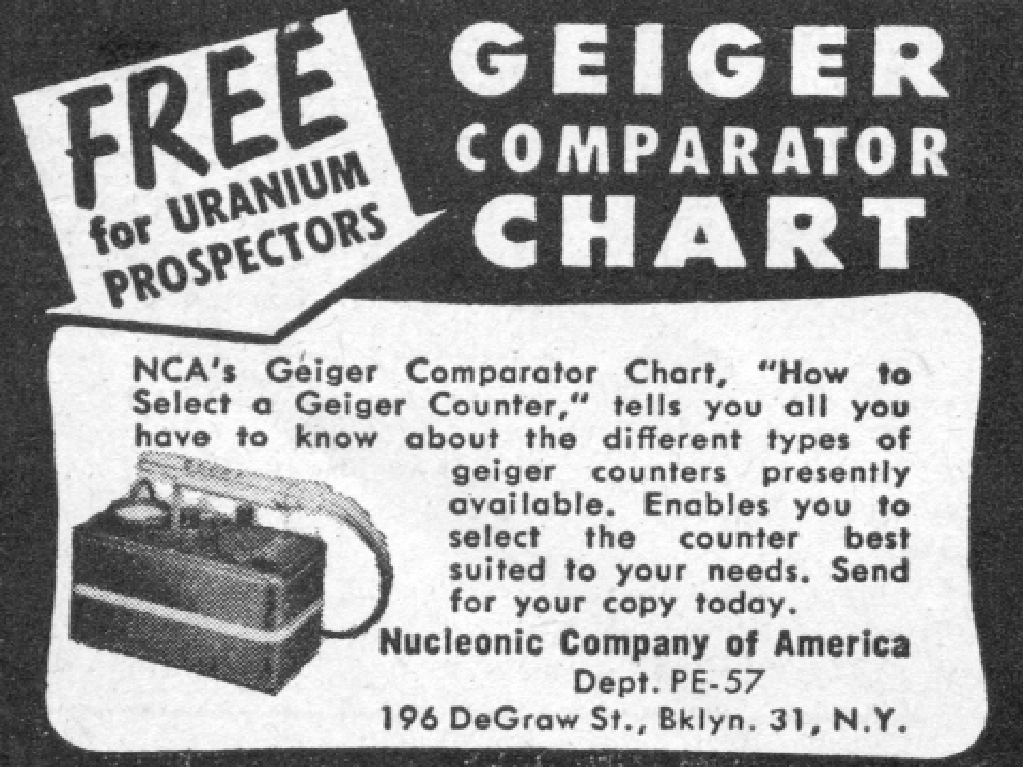
Nucleonic Company of America 1955
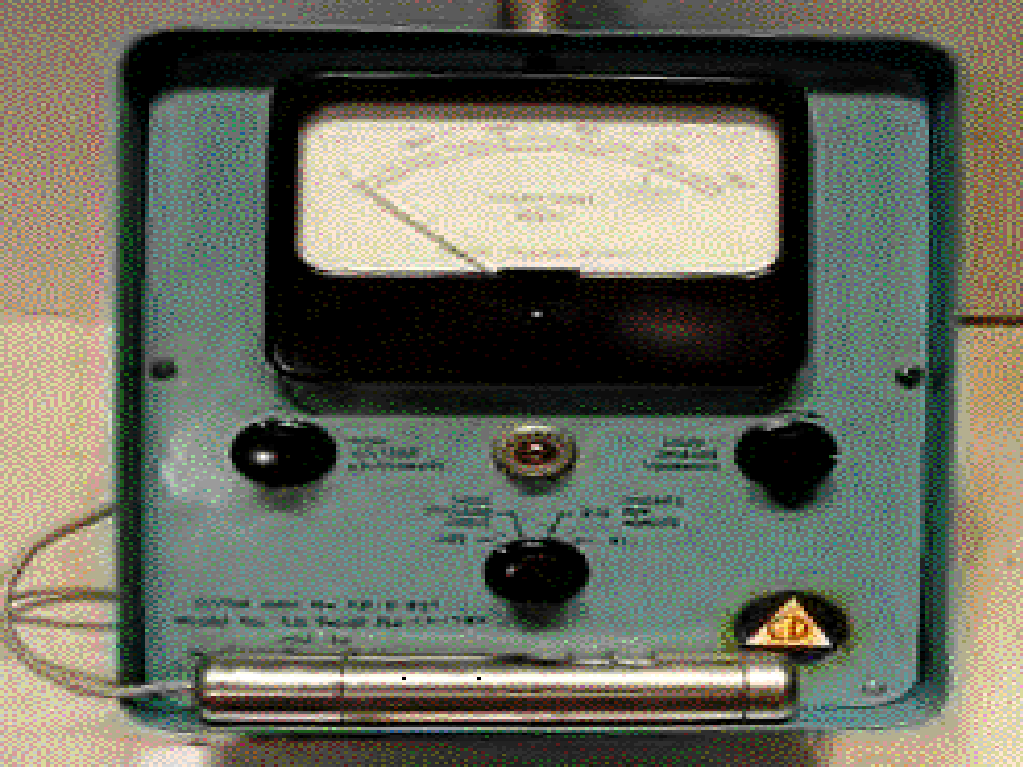
Nucleonic Company Model 457
In 1960, NUCOR offered several units. The Raychronix D-1A Ionization Chamber Cutie Pie had a range from 0-5000 mR/h. It used 4 Eveready 22.5V and 1 Eveready 1.5 V batteries. It weighed 2.5 lbs.
The NRD CS-40 Ionization Cutie Pie had a range from 0-20 R/h. It was built to Brookhaven National Laboratory design. It used 5 Everready 22.5V and 2 Eveready 1.5 V batteries. It weighed 5.25 lbs.
The Raychronix D-6 Samson Alpha meter had a range from 0-12500 cps. The sensitivity was 2 MeV alphas and 0.05 MeV betas. The chamber is 40 cubic inches with a thin pliofilm window 4” x 4.5”. It used 4 Mallory 1.3 V, 7 Eveready 22.5V, 1 Mallory 6.5V and 1 Mallory 9.2V batteries. It weighed 7.5 lbs.
The NUCOR E-1B Fast Neutron Dosimeter is designed to provide a reading proportional to human tissue sensitivity over the range from 0.2 to 10 MeV. It uses a proton recoil proportional counter and a gamma discriminating rate meter cicuit. The range is from 0-500 mR/h with 200 mR total integrated dose. It uses 10 D-size flashlight batteries. It weighed 7 lbs.

Nuclear Corporation of America Ad 1957


Nuclear Corporation of America Ad 1959